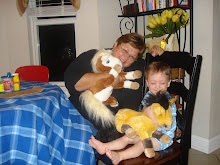
The Original Cafe Du Monde is a traditional coffee shop. Its menu consists of dark roasted Coffee and Chicory, Beignets, White and Chocolate Milk, and fresh squeezed Orange Juice. The coffee is served Black or Au Lait. Au Lait means that it is mixed half and half with hot milk. Beignets are square French -style doughnuts, lavishly covered with powdered sugar. In 1988 Iced Coffee was introduced to the cafe. Soft drinks also made their debut that year.
Coffee first came to North America by way of New Orleans back in the mid-1700's. It was successfully cultivated in Martinique about 1720, and the French brought coffee with them as they began to settle new colonies along the Mississippi.
The taste for coffee and chicory was developed by the French during their civil war. Coffee was scarce during those times, and they found that chicory added body and flavor to the brew. The Acadians from Nova Scotia brought this taste and many other french customs (heritage) to Louisiana. Chicory is the root of the endive plant. Endive is a type of lettuce. The root of the plant is roasted and ground. It is added to the coffee to soften the bitter edge of the dark roasted coffee. It adds an almost chocolate flavor to the Cafe Au Lait served at Cafe Du Monde.
The Cafe Du Monde Coffee and Chicory is traditionally served Au Lait, mixed half and half with hot milk. However, people have a personal preference on how they like their coffee. People like their coffee strong and black, or with sugar; maybe with a little more milk, or maybe a little weaker brew. I suggest that the Coffee and Chicory be demonstrated using vacuum bottles to keep the coffee hot, and to give the customer the opportunity to experiment finding their personal preference.
Our Coffee is also available Decaffeinated. We use an Ethyl Acetate process to decaffeinate the coffee used in our blend of Coffee and Chicory. Ethyl Acetate is a natural chemical found in many fruits.Enjoy!Learn more about Cafe'Du Monde at www.cafedumonde.com
Coffee first came to North America by way of New Orleans back in the mid-1700's. It was successfully cultivated in Martinique about 1720, and the French brought coffee with them as they began to settle new colonies along the Mississippi.
The taste for coffee and chicory was developed by the French during their civil war. Coffee was scarce during those times, and they found that chicory added body and flavor to the brew. The Acadians from Nova Scotia brought this taste and many other french customs (heritage) to Louisiana. Chicory is the root of the endive plant. Endive is a type of lettuce. The root of the plant is roasted and ground. It is added to the coffee to soften the bitter edge of the dark roasted coffee. It adds an almost chocolate flavor to the Cafe Au Lait served at Cafe Du Monde.
The Cafe Du Monde Coffee and Chicory is traditionally served Au Lait, mixed half and half with hot milk. However, people have a personal preference on how they like their coffee. People like their coffee strong and black, or with sugar; maybe with a little more milk, or maybe a little weaker brew. I suggest that the Coffee and Chicory be demonstrated using vacuum bottles to keep the coffee hot, and to give the customer the opportunity to experiment finding their personal preference.
Our Coffee is also available Decaffeinated. We use an Ethyl Acetate process to decaffeinate the coffee used in our blend of Coffee and Chicory. Ethyl Acetate is a natural chemical found in many fruits.Enjoy!Learn more about Cafe'Du Monde at www.cafedumonde.com






